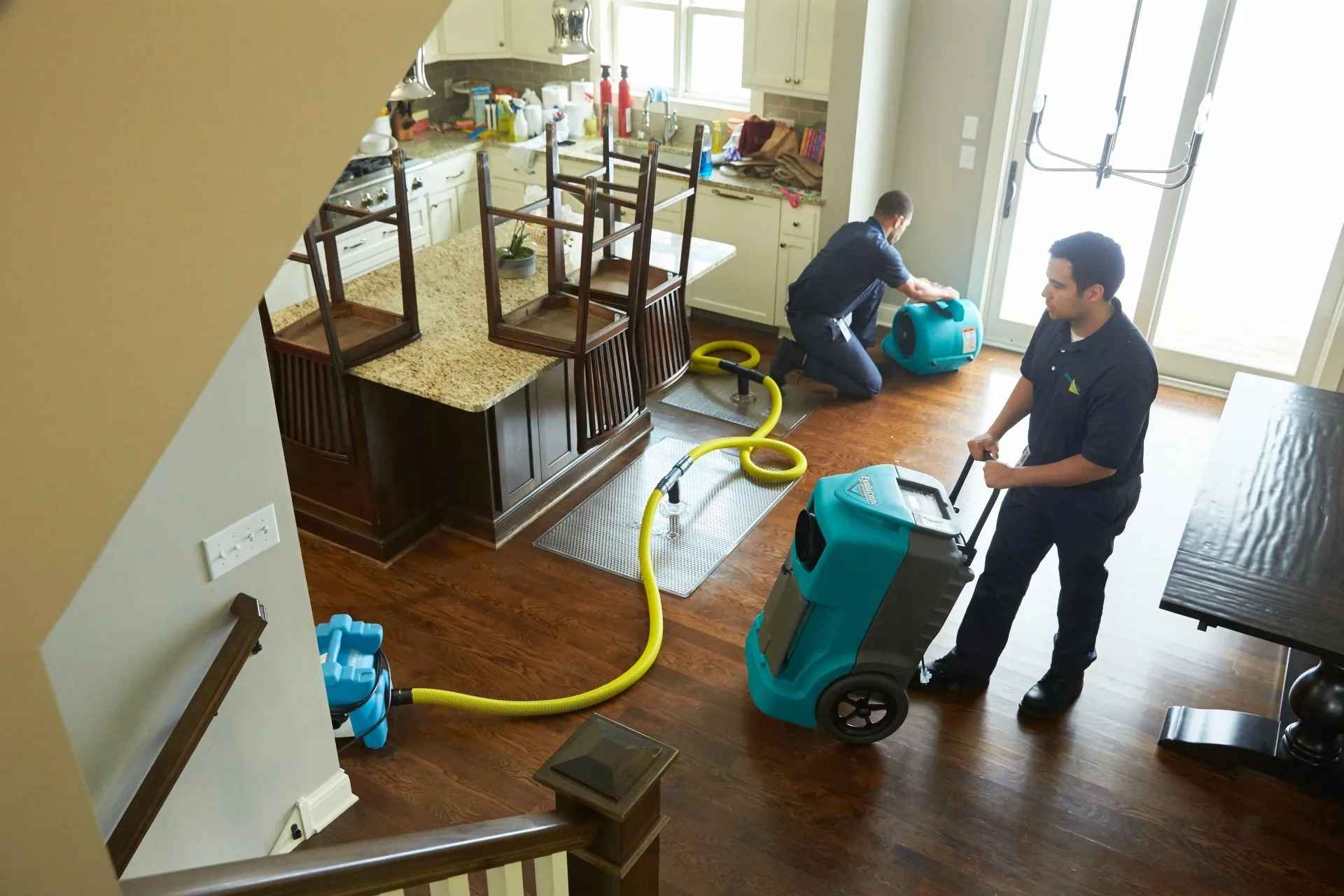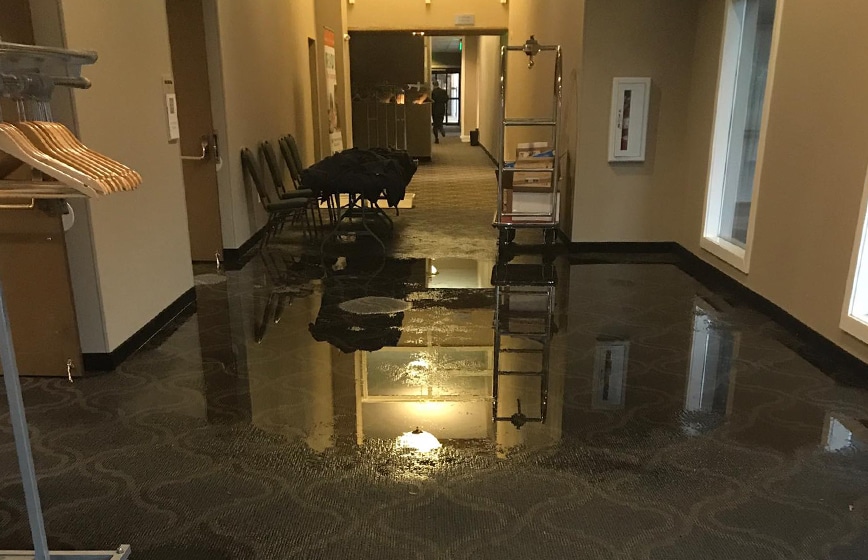Top Tips for Effective Water Damage Restoration: Protect Your Building Today
Water damage can strike unexpectedly, triggering significant disruption and prospective threats. Reliable restoration calls for an organized approach to decrease more injury. From reviewing the damage to applying safety nets, each action plays an essential role in guarding residential property. Understanding these approaches can make all the difference in the results of a water-related crisis. What necessary actions should be prioritized to guarantee complete defense?
Assess the Damage Immediately

Shut Off the Supply Of Water
Shutting off the water system is an essential action in stopping more damage during a water-related incident. When a leak or flooding happens, prompt action is crucial to reduce the level of the damage. Finding the primary water shut-off valve ought to be a concern. This valve is frequently located near the water meter or where the water line gets in the building. When located, transforming the shutoff clockwise will quit the circulation of water. In situations where the major valve is unattainable, private shut-off shutoffs for devices may likewise be used. Without delay shutting off the supply of water not only shields the home from additional harm however also facilitates the subsequent restoration procedure, making sure that healing efforts can start right away.
Get Rid Of Excess Water Promptly
Eliminating excess water without delay is vital for decreasing damage and avoiding mold and mildew growth in impacted locations. The longer water continues to be in contact with materials such as drywall, timber, and insulation, the greater the risk of architectural damage and the advancement of mold. Homeowners must act promptly to assess the situation and use proper tools, such as damp vacuum cleaners or pumps, to draw out standing water successfully. If the quantity of water is considerable, getting in touch with professional restoration services might be needed, as they can provide customized devices and knowledge. Additionally, eliminating furniture and valuables from the damaged location can assist to minimize damage and assist in the general restoration process. Timely activity not only safeguards property yet also aids in a smoother recovery trip.
Dry the Affected Location
After getting rid of excess water, it is necessary to dry out the affected area extensively. This entails eliminating any kind of standing water and improving air circulation to assist in evaporation. Efficient drying out will certainly aid prevent mold and mildew growth and further damage.
Eliminate Standing Water
Quickly attending to standing water is essential for efficient water damage restoration. The existence of stagnant water can bring about further residential or commercial property damage and produce an atmosphere helpful to mold development. To minimize these risks, it is important to get rid of standing water as promptly as feasible (Flood Cleanup Services). This procedure generally includes making use of completely submersible pumps, damp vacuums, or specialized removal equipment. Professionals advise examining the depth and degree of the water prior to deciding on the suitable technique for elimination. Safety precautions should additionally be taken, consisting of wearing safety equipment and making sure power is transformed off in impacted areas. Once the standing water is properly eliminated, the drying out procedure can start, even more guarding the home from continuous damage
Rise Air Blood Circulation

Evaluate for Mold Growth
Mold and mildew development is a major worry adhering to water damage, as it can bring about wellness concerns and architectural wear and tear. After any type of flooding or leaks, it is vital to conduct a detailed evaluation of the influenced areas. This includes monitoring covert spaces such as behind wall surfaces, under rugs, and in cellars or attic rooms where wetness may stick around. Signs of mold and mildew include a musty odor, discoloration on surface areas, or noticeable development. Homeowner must use safety gear when checking, as mold spores can posture health and wellness threats. Flood Cleanup Services. If mold is detected, it is crucial to resolve it right away, as delaying remediation can intensify the problem and raise the risk of severe health issues for passengers. Early treatment is vital to effective mold administration
Repair and Restore Damaged Structures
When addressing water damage, it is essential to first analyze the architectural stability of the affected areas (Residential Water Damage Repair). This evaluation assists determine potential risks and notifies the needed repair work techniques. Engaging expert restoration services ensures that the restoration process is carried out securely and properly
Assess Structural Stability First
Prior to initiating any kind of water damage restoration, it is important to examine the architectural honesty of the afflicted area. This examination aids recognize any type of jeopardized aspects, such as walls, structures, or beam of lights, which might posture safety and security dangers. Examining for indications of bending, breaking, or mold and mildew development is critical, as these indications can reveal underlying damage that calls for immediate focus. Furthermore, understanding the level of the damage can assist restoration efforts and establish whether fixings are feasible or if replacement is essential. It is essential to document findings thoroughly, as this details can be valuable for insurance cases or future recommendation. Focusing on structural evaluation guarantees that restoration efforts continue safely and properly, ultimately protecting the home and its owners.

Use Expert Restoration Services
Making use of specialist restoration solutions is important for successfully repairing and bring back damaged structures after water occurrences. These experts have the essential training, devices, and experience to mitigate and assess water damage thoroughly. They can recognize covert problems, such as mold development and structural weaknesses, that might not be immediately noticeable. Professional solutions likewise utilize innovative drying out techniques and devices, ensuring that all wetness is eliminated to stop further damage. Additionally, they follow industry requirements and laws, guaranteeing that the restoration process is safe and reliable. By engaging restoration experts, building owners can speed up recovery, lessen long-term damage, and ultimately secure their financial investment - Flood Cleanup Services. This positive strategy is essential in keeping the stability and security of damaged structures
Stop Future Water Damage
To efficiently stop future water damage, homeowners should embrace a proactive method to repair and maintenance. Normal evaluation of gutters, downspouts, and roofs is necessary; stopped up rain gutters can cause water overflow and roof leakages. In addition, looking for leaks in pipes fixtures and devices can obstruct see this potential damage. Homeowners ought to also take into consideration mounting sump pumps in basements or low-lying areas to handle water build-up. Securing splits in structures and making sure correct water drainage around the property are crucial steps in protecting against water invasion. Moreover, preserving moisture degrees with dehumidifiers can stop mold growth. By executing these safety nets, homeowners can considerably lower the threat of water damage and shield their building for the long term.
When a water damage event occurs, it is essential to evaluate the damage right away to alleviate further concerns. Eliminating excess water without delay is important for reducing damage and protecting against mold and mildew growth in affected areas. Swiftly dealing with standing water is critical for reliable water damage restoration. The existence of stationary water can lead to more residential or commercial property damage and create an atmosphere helpful to mold and mildew growth. Before launching any water damage restoration, it is necessary to assess the structural stability of the damaged area.